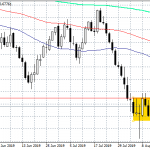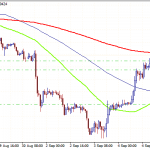- After months of anticipation, the US and China finally sign phase one of their trade agreement. Can the two countries hold up their end of the deal?
After two years of trade tensions between the US and China, an 86-page trade deal was finally signed yesterday. Market participants have had high hopes for this Phase One Deal and optimism leading up to its signing helped equities markets rally to new historic highs.
So what was in the Phase One Deal? Here are the details:
China agreed to buy $200 billion worth of US goods.
According to the deal, China will buy a minimum of $200 billion worth of US goods from 2020 to 2021. The breakdown per sector is as follows: $52.4 billion from energy, $32 billion from agriculture, $77.7 billion from manufacturing, and $37.9 billion from services.
These targets were based on the Commerce Department’s data which showed that US exports amounted to around $185 billion in 2017. If these goals are to be met, China will need to increase its imports by 54% this year. The US agriculture sector stands to benefit from the deal because China has relaxed its policies that kept US farm products from entering the country. Health standards, licensing, inspection, and registration rules on agricultural products will now be more lenient to make way for more imports.
China will not tolerate Intellectual Property theft.
American companies will no longer be required to transfer vital technology to China to conduct business in the country. Previously, even confidential information was asked by the Chinese government for American companies to secure permits for operation. Consequently, this has led to IP theft and counterfeiting.
China will no longer devalue the yuan for comparative advantage.
Earlier this week, the US government removed its label for China as a currency manipulator. It may have had to do with China agreeing not to devalue its currency to boost its exports. Additionally, the Chinese vowed to be more transparent in its dealings in the currency market. The Chinese have promised to announce its interventions as well as its reserves and level of imports.
Tariffs are still in place.
There will still be a 25% tariff on Chinese goods imported to the US by manufacturers. Meanwhile, consumer goods from China will have 7.5% tariffs, down from initially being at 15%. As for China, it will still maintain duties ranging from 5% to 25% on US goods but allowed for exclusions.
Read our Best Trading Ideas for 2020.
No one can deny that the ongoing trade war has affected both the US and China. While the deal can be seen as a relief for businesses in both countries, it is still far from being igniting growth in their respective economies.
There also seems to be a general sense of scepticism about China’s commitment to the deal. For instance, there is a clause in the agreement which said that the Asian economic giant would buy American products “based on the market demand.” Consequently, this has led to speculations that the contract may not be as stringent as the US would like it to be.
The agreement also specified that a party who feel that the other one violated specific terms, they can “ an obligation.” The clause means that the US or China can withdraw from the deal if they feel that the other side did not act “in good faith.” If both countries can hold their sides of the bargain, we could see tariffs being completely dropped in Phase Two of negotiations. But if not, the ongoing trade war may just take a turn for the worse and so will global economic growth.




